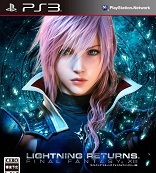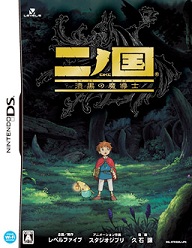« Artifact Gear: Let’s Talk Persona! | Main | Shop Watch May 2017 »
Artifact Gear: A Brief History of Persona
By Russ | April 26, 2017 at 3:22 am
This one begins, as a lot of stories do; in a book.
The core mythology of the Megami Tensei family of titles – which includes Persona – are based on the Digital Devil Story: Megami Tensei light novels published by Aya Nishitani. The rights to these novels were bought by Namco and made into the first Megami Tensei games. The novels seem to play as an inverse of the cyber-punk genre. In DDS, the dystopian future is about to happen, and magic/technology brings it forth; as opposed to cyber-punk, where the dystopia has happened and freedom is found in knowing and understanding magic/technology. Still, the original novel features a high school protagonist, and the first game would go on to do so as well. Megami Tensei II would break from the novels and start its own story – one closer to regular cyber-punk fare. The protagonists would still be teenagers, but introduced a familiar setting to a lot of MegaTen games: The Apocalypse.
Shin Megami Tensei If… is often credited with being the precursor to the Persona series, with the adventure in If… taking place entirely in a school setting. If… came out in 1994 for the Super Famicom, and Persona came out in 1996 for the PlayStation. High school protagonists are nothing new to the MegaTen franchise – or Japanese media in general – but If… and its place in the MegaTen timeline seem to have cemented a connection in minds of fans of the series. It is important to note this was an odd and experimental time in the MegaTen franchise, which – despite the franchise’s seemingly odd and experimental tone – enjoys and refines its own key systems in a fashion similar to the main Dragon Quest series of games. After all, 1995 saw the first Devil Summoner and Majin Tensei spin-offs, and of course Megami Ibunroku Persona hit late 1996.
Megami Ibunroku Persona is a MegaTen game through and through, with the exception players recruit a party of humans instead of getting demons to fight directly for them. Almost all previous MegaTen games would have the summoned demon take up a party slot. In Persona, party members can still recruit, fuse, and use demons essentially as spells; but the personae are not static summons and disappear immediately after the spell is cast. The first Persona game has a lot of focus on the high school characters and follows one of two main routes: the SEBEC quest, wherein the party fights a corrupt corporation attempting to harness god-like power; or the Snow Queen quest, wherein the party says “Fuck it!” and delves deeper in their school to fight Adele Dazeem. Well, not really. But the quest does override the main story and is a harder version of the game. And when Atlus brought over Persona to North America as Revelations: Persona…
Atlus removed access to the Snow Queen quest. There are rumors as to why this happened, such as a small localization team who thought the quest was an extra; but nothing concrete. This same localization team made an effort to give the game a more North American setting, but also changed a lot of in-game art to make the cast appear more urban or United States-y.

So of course the guy whose hobbies include graffiti and not liking cops gets this makeover. The main character was made less effeminate, and the rest of the cast received lighter skin and hair. Hardcore Gaming 101’s Persona Page has a nice set of comparison artwork for those interested. These changes could be their own column due to how numerous and um… odd the changes were; especially since the PSP release undoes the graphical changes and doesn’t remove the Snow Queen quest. And takes place in Japan. Really, the localization of the re-release seems to be Atlus trying to make things better, but Persona was a hard product to work with in the first place. It came about when Final Fantasy VI, Super Mario RPG, and two Breath of Fire games had normalized a balance between challenge and gameplay; and/or offered a neater presentation. Later, Suikoden and Wild Arms offered alternative options for RPG fans while still remaining less a departure from the sword and sorcery genre (or existing as a Mario product). Persona‘s battle system is clunky by comparison of the titles of that era, and features multiple, ill-explained systems in a genre already ill-explained to the casual gamer. Remember, Final Fantasy VII – and thus the normalization of the RPG genre – was still a year off. Xenogears and the discussion of mature themes in games was two years away. Persona was awkward for its time. The later PSP release just makes this awkwardness easier to see.
And then there’s the whole mess with Persona 2. Two titles in Persona 2 were released: Innocent Sin and Eternal Punishment. Innocent Sin is the first part of Persona 2‘s story, with Eternal Punishment closing the duology. Can you guess which title was released in North America first?
Yeah, it was Eternal Punishment.
Innocent Sin is rumored to have been passed over because even in 1999, swastikas and Hitler references were not franchise-building practices; unless the title was released on PC as Wolfenstein 3-D. Though it’s not like any MegaTen title has ever been controversial*. So Innocent Sin was passed over for Eternal Punishment. Eternal Punishment‘s December 2000 release did not help matters much since Christmas is a busy season, and the Persona series was forgotten for a number of years. MegaTen would later be revived in North America with the 2004 PS2 Nocturne release, the following Digital Devil Saga titles, and finally in 2007; Persona 3.
Not that Persona 2‘s release woes ended there. Innocent Sin did make it to North America late in the PSP’s life. The PSP remake of Eternal Punishment never saw release in North America, likely due to NA interest in the PSP being limited to myself and one other dude. While the original PlayStation release is available via PSN, players have yet to experience a concise version of events without the use of fan translations.
Persona 3 and it’s later re-release FES have proven to be successful games in the Western market. According to VG Chartz, roughly 32% of Persona 4 and Golden‘s total sales are from the USA; with ~370K units moved. While total sales of all three different versions of Persona 3 are higher, ~33% of sales are still from the United States. Persona 5 has yet to be calculated, but the game has set pretty high up on sales charts closer to its release, and the Take Your Heart Edition is sold out from multiple retailers as of this date. For a series with a relatively troubled beginning, this is not a bad way to end up.
I had initially meant to talk about the evolution of the series as a game via its systems, but got carried away with history. History is important for emerging media, and as we solidify and try to understand games as a premiere media it is important to remember where we come from, and how we got here. Next time we’ll talk a little about that importance.
-Russell Ritchey
* – That’s a joke, by the way. God has been an antagonist in at least one game. He loves using status ailments as of the last time I fought him.
Topics: Column for Old People 1.0, Persona, Persona 2, Persona 3, Persona 3 Portable, Persona 4, Persona 5, Some Bullshit








